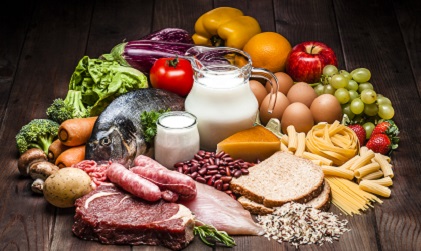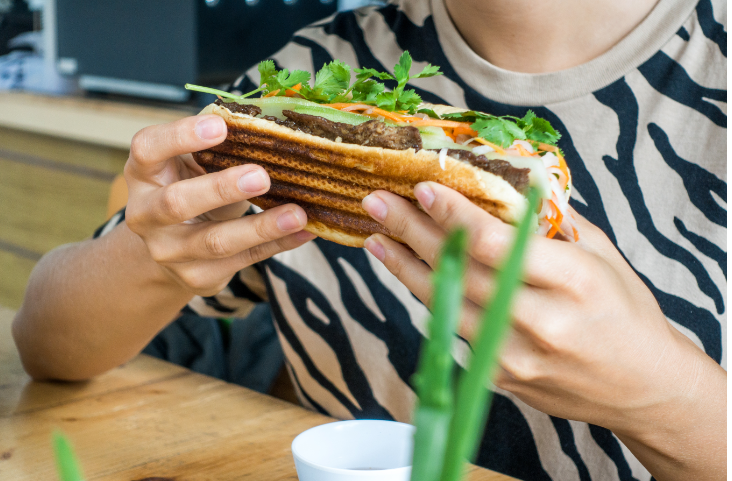11 Dec Unpacking Ultra-processed foods
By Niki Bezzant
What is an ultra-processed food?
The term ‘ultra-processed foods’ (UPFs) describes foods that have been through industrial processing, resulting in energy-dense products which are high in sugar, unhealthy fats and salt.
The NOVA food classification system is the first to come up with a formal definition of ultra-processed foods, which it says are industrial food and drink formulations made of food-derived substances and additives, often containing little or no whole foods. The purpose of ultra-processing is “to create branded, convenient (durable, ready-to-consume), attractive (hyper-palatable) and highly profitable (low-cost ingredients) food products often designed to displace all other food groups”.

The resulting foods are typically high in kilojoules and low in nutrients such as dietary fibre, protein, vitamins and minerals. Common examples of ultra-processed foods are packaged snacks, instant noodles, chicken nuggets, carbonated drinks, reconstituted meat products and confectionery.
UPFs are increasingly common in our food supply and are making up more and more of our diets; it’s estimated 80% of shelf-stable products in the supermarket in NZ are ultra-processed. These foods are often cheaper and more convenient than whole foods, presenting an extra challenge people, especially those on low incomes.
Around the world the situation is similar, and this is having a negative effect on local food cultures and the health of people. In an article on the NOVA system, its creators explain:
Since the 1980s a monolithic global industrial food system has emerged. The food supplies of high-income countries with less strong culinary traditions, such as the US, Canada, the UK, and Australia, have become dominated by packaged, ready-to-consume products. In other high-income countries and settings, and in middle- and low-income countries, these products are rapidly displacing traditional dietary patterns based on minimally processed foods and freshly prepared dishes and meals. Rates of obesity and diabetes have correspondingly risen very rapidly.
The processing of foods is starting to get more attention from health researchers. It’s now recognised that we need to look at foods not only in terms of their nutrients, but also in terms of the degree of processing they’ve undergone, and the effect this can have on human health.
Are all processed foods bad?
No. Different types of processing can have an effect on the healthiness or otherwise of a food, and foods in the same category can be both minimally processed and ultra-processed.
For example, yoghurt can be minimally processed, with no sugar or thickeners added. Or it can be ultra-processed, containing many extra ingredients including several types of sugar.
Cereal can be simply whole grains such as oats, or it can be highly-processed, extruded, refined, and formed into shapes with added sugars, fats and salt. Milk can be simply and minimally processed, or have sugar, flavouring and fat added to make chocolate milk.
There are also foods that are technically ‘processed’ but which are highly useful and nutritious. For example, canned tomatoes, canned and dried chickpeas, lentils and beans, and frozen vegetables and fruit. There are processed breads, grain products such as pasta and noodles, flours and cereals that still contain lots of nutrients and would be considered healthful.

Why are ultra-processed foods so bad?
There are several reasons ultra-processed foods are bad for us:
- Energy dense, nutrient poor
Because of how they’ve been processed, UPFs are often very high in energy (kilojoules) and low in the nutrients that might be found in the original ingredients the UPFs are made from. They usually have added sugar and fat which contributes to this, and often contain unhealthy levels of salt and trans fats. They almost always contain other additives as well, such as flavourings, colourings and preservatives.
- Formulated to be easy to overeat
Because of how they’ve been processed – with the addition of extra flavours, colours, salt, sugar and fat, UPFs are highly attractive and palatable to us. That makes them really easy to over-consume. It also means we are likely to eat less of the whole or minimally processed foods they’re replacing.
- Low in fibre
UPFs are typically low in fibre, even if the original ingredients they purport to come from are high in fibre. Think of fruit drinks and juice; potato chips; white bread. This is usually because the parts of the original ingredient – the fruit flesh or the outer layer of the grain, in these cases – have been removed during processing of the food.
- Aggressively marketed
UPFs are cheap to produce. This means they’re highly profitable, and according to the NOVA researchers, “highly competitive with foods that are naturally ready to consume and freshly prepared dishes and meals”. It also means they are typically marketed aggressively, and marketers can sometimes target the most vulnerable consumers, such as children.
- Environmental impacts
UPFs have not, until recently, been recognised for their negative environmental impact. A recent Lancet article addressed this, however, pointing out that these foods may have a significant negative impact on the environment, through all stages of their life cycle, including ‘agriculture, processing, waste, retail, transport, and household use’. The article authors also highlight the power of the food industry:
The power of transnational corporations means they can dictate where and what is grown, produced, marketed, and sold in food systems globally. They can use aggressive marketing to drive up demand and create new food cultures, construct global supply chains to obtain cheap ingredients, and use extensive packaging that encourages mass production, long-distance transportation, and waste related to their consumption.
What does the evidence say?
UPFs are increasingly the focus of research both here and overseas, and evidence is building that UPFs have a negative impact on health. Here are some evidence highlights:
- A 2016 study by Auckland University researchers examined more than 19,000 packaged products at four Auckland supermarkets in 2011 and 2013. It found about 84 percent of them were ultra-processed.
- A recent Otago University study analysed dietary information from the POI study, which has studied more than 800 Dunedin children from birth over the last ten years. The data showed that children at 12 months of age derived 45% of their energy intake from ultra-processed food, which increased to 51% by five years of age.
- A recent review by researchers at Deakin University found more ultra-processed foods in the diet is associated with higher risks of obesity, heart disease and stroke, type-2 diabetes, cancer, frailty, depression and death.
- A 2019 trial compared body weight changes and calorie consumption for 20 healthy adults—10 men and 10 women—who ate either an ultra-processed or a minimally processed diet for two weeks. The researchers found that on the ultra-processed diet, people ate about 500 calories (2,100 kilojoules) more per day than they did on the minimally processed diet. These increased calories came from carbohydrate and fat. People also ate faster on the ultra-processed diet and gained almost a kilo on average. When they were on the minimally processed diet, they lost about the same amount of weight.
- Otago University researchers are working on research on carbohydrate quality; some of this is around what the degree of processing does to whole grains, and how this affects health. Two of their trials found improved glycemic control in people with type-2 diabetes, when they ate minimally processed bread and grains compared with highly processed grains. The researchers are continuing to look at how milling of whole grains affects carbohydrate quality.
How can we eat less ultra-processed food?
When UPFs are convenient, cheap, tasty and ubiquitous in our food supply, it can be really hard to avoid them. It can also be difficult or impossible for people on low incomes, for whom UPFs may be the difference between eating or not eating.
Beyond addressing the massive wider issues of inequality, food insecurity and poverty in New Zealand, and the related issue of the food system needing to be reformed, what can we do at an individual and whanau level to reduce our reliance on UPFs?
Here are some ideas:
- Learn or teach cooking
If we can prepare meals for ourselves, from scratch, we will be more confident and able to make food from whole or minimally processed ingredients. If you don’t cook, see if you can learn. And if you know how to cook, can you teach someone else? It’s a great gift to pass on. - Shop smart
If we understand the difference between UPFs and less processed foods, we can identify products that are better choices. It doesn’t have to be all or nothing; for example, a positive step might be to switch from a large pack of instant noodles to a bag of wholemeal pasta. Both are processed; the latter is less so. - Shop around
If we can, shopping at local markets and fruit and vege shops can be better value and mean we can buy more fresh whole foods than we would at the supermarket. - Think ‘plants first’
If we re-jig our meals to include half a plate of colourful vegetables, we will automatically eat less UPFs – there’s just no room for them on the plate. - Think ‘water first’
Ditch the fizzy drinks and go for plain water. It’s free, it’s much better for us and it’s more refreshing than sweet fizzy drink. It’s a super-easy way to cut a heap of sugar. - Think ‘whole’
A good way to shop when you’re looking at a processed food is to think: how close is this food to the original food it’s made from? If you can’t recognise it, it could be worth putting back on the shelf. A tinned tomato isn’t far from its original food; a fruit jelly is quite far.


